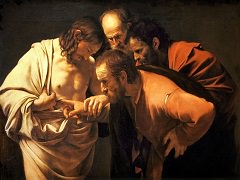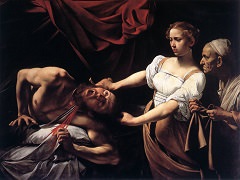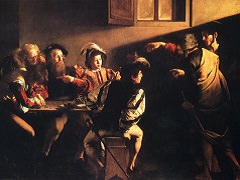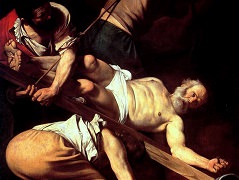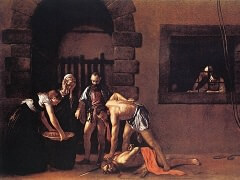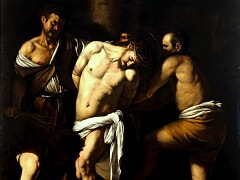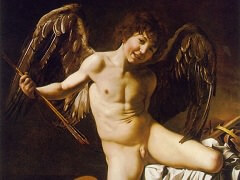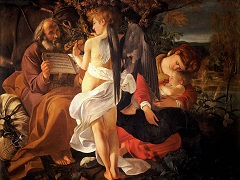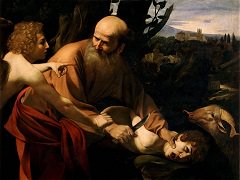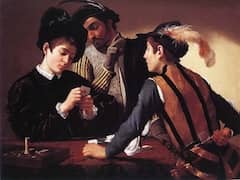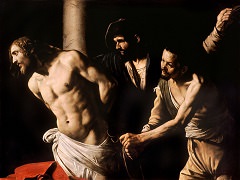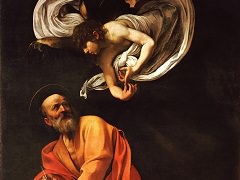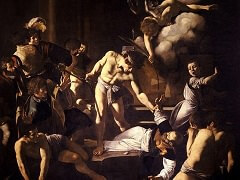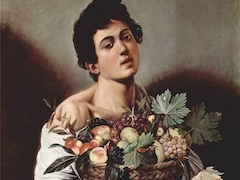Annunciation, 1608 - by Caravaggio

The Annunciation was given by Henry II, Duke of Lorraine, to the newly founded primatial church in his capital city, Nancy, sometime between his accession to the throne
in 1608 and 1616, the date of a freely rendered engraving after the picture by Jacques Bellange. Nancy had become a bishopric in 1603, and the picture was placed on the high altar
of the new primatial church, begun in 1607, possibly as early as 1609, when the as yet unfinished building was provisionally opened to the public. Its loose and summary handling
is unquestionably in Caravaggio's very late manner and is certainly not pre-Sicilian. It seems probable that the work was acquired and perhaps even commissioned (in which case
a Neapolitan origin seems most likely) through the Mantuan Gonzaga connection.
Henry II was married to Margherita Gonzaga, whose brother, Cardinal Ferdinando, was, according to Bellori, the person responsible for obtaining a papal pardon for
Caravaggio on the eve of the artist's death. The somewhat mannered figure of the angel seems at first rather unusual for Caravaggio, but the contrast between his energetic pose
and the Virgin's calm receptivity is dramatically and psychologically very effective. It has been pointed out that the illusionistic treatment of the angel, who seems to protrude
partially outside the space of the picture, parallels that of the head of Goliath in the Borghese David and represents a more advanced, 'Baroque' treatment of space than that in
any of Caravaggio's previous works. It might be noted that even a figure such as that of Saul in the earlier Conversion of Saul is, despite his outward-moving gesture, located
behind the picture plane.

